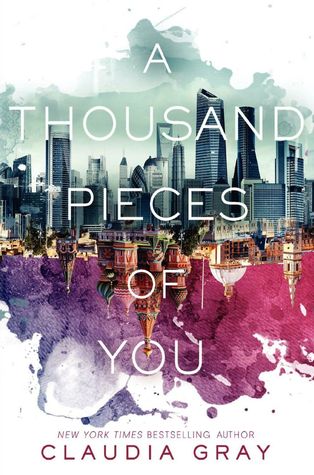Reading…A Thousand Pieces of You

“Every form of art is another way of seeing the world. Another perspective, another window. And science –that’s the most spectacular window of all. You can see the entire universe from there.” Or universes. Claudia Gray explores the possibility of the existence of multiple universes in her book A Thousand Pieces of You.
Marguerite Caine, the main character of the book, who has been homeschooled her whole life, is eighteen-years-old, is a fantastic artist who paints mostly portraits and will be attending an Art School in the fall.
Marguerite is also the daughter of two incredibly smart physicists who have formed the radical theory that multiple universes exist. They have worked to create a tool that allows people to travel to universes that are not their own. The physicists believed that a countless number of realities or dimensions exist where essentially everything that could have happened did: a dimension where the Nazi’s won WWII, a dimension where the Chinese colonized America before Britain, even a dimension where little 4th grade Marguerite wore a blue shirt instead of a red one. This theory led to the invention of the Freebird, which is a device much like a locket, that transports the wearers’ consciousness to different dimension version of themselves.
Soon after this technology is invented, Marguerite’s father is killed when the brakes in his car are cut and he drives into the ocean. Soon after, Paul Markov, Marguerite’s parent college physics assistant, clears all her parents data and jumps into another dimension using the Freedbird. All signs point to Paul as Marguerite’s dad’s killer and she is ready to jump through every dimension to find him. But as she travels to universes drastically different from her own she begins to question Paul’s guilt.
This fast-paced, compelling story will surely pull any reader into this book. The relationships between the characters in the book continually change as Marguerite jumps from dimension to dimension meeting new versions of the people she loves. This book will dive deep into the transition into adulthood as Marguerite discovers new worlds that teach her more than she ever knew about who she is.
“Mathematical parallels. It’s plausible to hypothesize that these patterns will be reflected in events and people in each dimension. That people who have met in one quantum reality will be likely to meet in another. Certain things that happen will happen over and over, in different ways, but more often than you could explain by chance alone.”
This story may be centered around a scientific theory, but the theme takes a turn focusing on fate. Although the book explores multiple different realities with millions of different possibilities, Marguerite discovers recurring events in her alternate lives by traveling through different dimensions. One essential thing in each version of Marguerite, her soul, is constant in every universe with every set of possibilities.
This book will have readers looking deeper into who they are as a person and how decisions can affect the future of a person in bigger ways than one can imagine. Overall a good, enticing book that will interest any reader. With the normal good old book plot twists readers will find themselves discovering things just as Marguerite herself uncovers these truths.
This book is a 4 out of 5 star book. With a unique plot line, the story stays true to its theme throughout the book creating an enticing read for readers of any genre.





